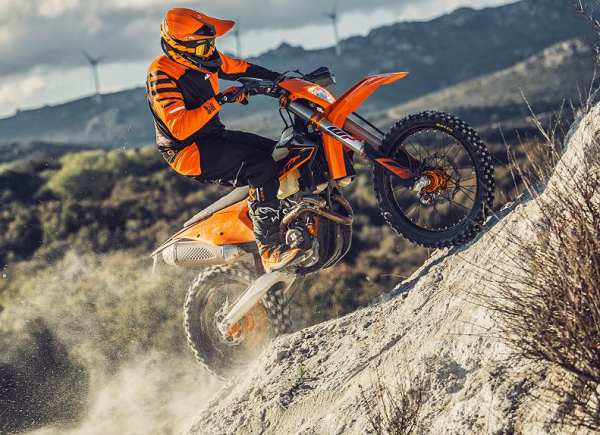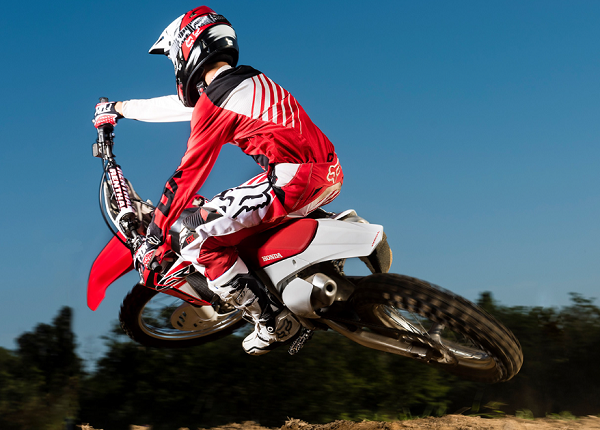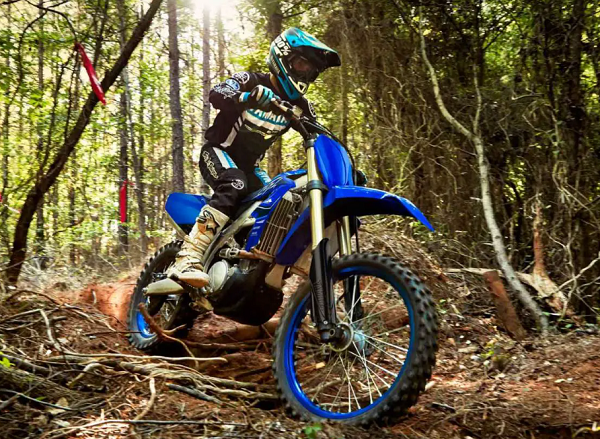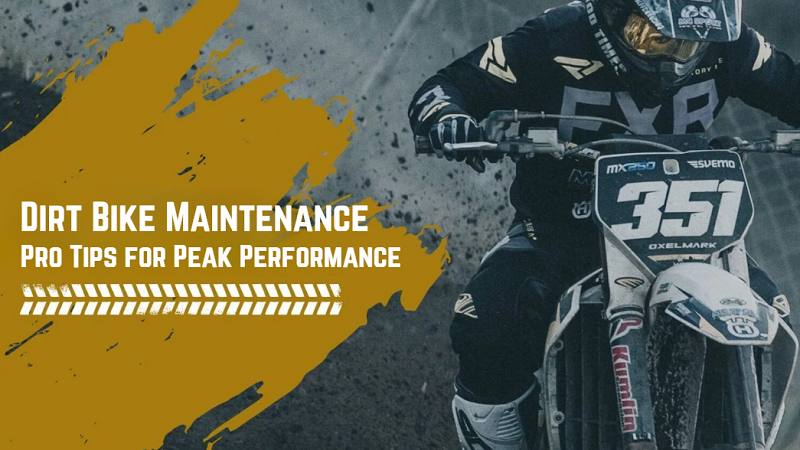Dirt superbikes, often referred to as dirt bikes or motocross bikes, are the adrenaline-pumping machines that fuel the passion of off-road enthusiasts worldwide. These two-wheeled wonders are designed to conquer rugged terrains, jump over obstacles, and provide an unmatched thrill that sets them apart from their road-going counterparts. In this comprehensive guide, we’ll delve deep into the world of dirt superbikes, exploring their history, design, riding techniques, safety measures, and much more. Buckle up, as we take you on a thrilling ride through the fascinating universe of dirt superbikes.
The Birth of Dirt Superbikes
To understand the evolution of dirt superbikes, we must delve into their intriguing history. These rugged machines trace their origins back to the early 20th century when passionate riders sought to push the boundaries of what motorcycles could do. From the early cross-country races to the first motocross events, dirt bikes have come a long way in terms of design and technology.
Anatomy of a Dirt Superbike
Before you embark on your off-road adventure, it’s crucial to understand the intricate components that make up a dirt superbike. From the engine to the suspension system, each part plays a pivotal role in ensuring your ride is not only thrilling but also safe and reliable. This chapter will provide you with an in-depth look at the various elements that come together to create a dirt bike capable of conquering challenging terrain.
Choosing the Perfect Dirt Superbike
Selecting the right dirt superbike is a critical decision for any rider. Whether you’re a beginner or a seasoned off-road veteran, finding a bike that suits your riding style and skill level is paramount. We’ll guide you through the process of choosing the perfect dirt bike, considering factors such as engine size, weight, and ergonomics, so you can make an informed decision.
Riding Techniques for Dirt Superbikes
Riding a dirt bike is not just about twisting the throttle and hanging on for dear life. It requires skill, finesse, and an understanding of various techniques to handle the bike effectively on challenging terrains. In this chapter, we’ll walk you through the fundamentals of riding a dirt superbike, including body positioning, cornering, jumping, and more. With practice and patience, you’ll be tearing through the trails like a pro.
Gear Up for Safety
Safety should always be a top priority when riding any motorcycle, and dirt superbikes are no exception. From helmets to gloves and body armor, wearing the right gear can make all the difference in case of a fall or collision. We’ll provide you with a detailed guide on the essential safety gear you should invest in to protect yourself while enjoying the thrill of off-road riding.
Maintaining Your Dirt Superbike
Proper maintenance is crucial to ensure your dirt superbike remains in peak condition and continues to deliver top-notch performance. In this chapter, we’ll cover routine maintenance tasks, such as oil changes, air filter cleaning, and suspension adjustments. Keeping your bike well-maintained will not only extend its lifespan but also enhance your riding experience.
Exploring Off-Road Trails
The world is full of off-road trails just waiting to be explored, from rugged mountain paths to sandy deserts and dense forests. We’ll introduce you to some of the most breathtaking off-road destinations across the globe, highlighting the unique challenges and experiences each one offers. Whether you’re a beginner or an experienced rider, there’s an adventure waiting for you.
Dirt Superbikes and the Environment
As responsible riders, it’s essential to be mindful of the impact our off-road adventures may have on the environment. In this chapter, we’ll discuss eco-friendly riding practices, trail preservation, and how to minimize your carbon footprint while enjoying the thrill of dirt superbiking.
Joining the Dirt Superbike Community
Riding dirt superbikes is not just a hobby; it’s a way of life for many enthusiasts. Joining a community of like-minded riders can enhance your experience, provide opportunities to learn and grow, and offer a sense of camaraderie. We’ll guide you on how to connect with local and online dirt biking communities, share experiences, and make lasting friendships.
The Future of Dirt Superbikes
The world of dirt superbikes is continually evolving, with advancements in technology and design pushing the boundaries of what these machines can achieve. In this final chapter, we’ll explore the exciting innovations on the horizon, from electric dirt bikes to new materials that promise to make these off-road monsters even more capable.
Dirt superbikes are more than just machines; they’re a gateway to adventure, excitement, and a deep connection with nature. This comprehensive guide has taken you on a journey through the history, design, riding techniques, and safety measures associated with these rugged motorcycles. Armed with this knowledge, you’re ready to embark on your own off-road adventures, explore breathtaking trails, and become a part of the thriving dirt biking community.
Remember, safety and responsibility go hand in hand with the thrill of dirt superbiking. Always wear your protective gear, respect the environment, and enjoy the adrenaline rush responsibly. Now, rev up your engine, hit the dirt trails, and let the adventure begin!
10 Facts About Dirt Bikes
Dirt bikes, also known as motocross bikes or off-road motorcycles, are specialized two-wheelers designed for tackling rugged terrains and off-road adventures. Here are 10 fascinating facts about dirt bikes:
Off-Road Pioneers: Dirt bikes have a rich history dating back to the early 20th century. Riders and manufacturers started modifying motorcycles to handle off-road conditions, which eventually led to the creation of dedicated dirt bikes.
Lightweight Design: Dirt bikes are characterized by their lightweight construction. They are typically much lighter than their road-going counterparts, allowing riders to navigate rough terrain with greater ease.
Knobby Tires: One of the defining features of dirt bikes is their knobby tires. These specialized tires provide excellent traction on dirt, mud, gravel, and rocky surfaces, making them essential for off-road riding.
Suspension System: Dirt bikes are equipped with robust suspension systems, including long-travel forks and rear shocks. This setup helps absorb the impact of jumps, bumps, and rough terrain, providing a smoother and more controlled ride.
Two-Stroke vs. Four-Stroke: Dirt bikes come in two main engine types—two-stroke and four-stroke. Two-stroke engines are known for their simplicity and high-revving nature, while four-stroke engines offer more low-end torque and better fuel efficiency.
Motocross and Enduro: Dirt bikes are used in various off-road disciplines, with motocross and enduro being two popular categories. Motocross involves short, high-intensity races on closed circuits, while enduro events cover longer distances and require endurance and navigation skills.
Electric Dirt Bikes: In recent years, electric dirt bikes have gained popularity due to their quiet operation and instant torque delivery. They offer an eco-friendly alternative to traditional gasoline-powered bikes.
Protective Gear: Safety is paramount in dirt biking. Riders wear specialized gear, including helmets, goggles, gloves, boots, and body armor, to protect themselves from falls and impacts.
Learning Curve: Riding a dirt bike requires a specific set of skills, different from those needed for road riding. Novice riders often undergo training to learn proper techniques for handling the bike on uneven terrain.
Thriving Community: Dirt biking has a vibrant and passionate community of enthusiasts worldwide. From local riding clubs to international competitions, there are countless opportunities for dirt bike riders to connect, share experiences, and push their limits.
Whether you’re a seasoned off-road rider or someone just getting started in the world of dirt biking, these facts highlight the unique characteristics and appeal of these adventurous two-wheelers.
How to maintain a Dirt Bikes
Maintaining a dirt bike is essential to ensure it remains in top condition and continues to perform well on rugged terrains. Proper maintenance not only extends the lifespan of your bike but also enhances your safety while riding. Here’s a comprehensive guide on how to maintain a dirt bike:
Regular Cleaning:
Start by cleaning your dirt bike thoroughly after each ride. Use a mild detergent, a soft brush, and a hose to remove dirt, mud, and debris from the bike’s frame, engine, and suspension components.
Avoid using a pressure washer, as high-pressure water can force dirt and water into sensitive areas, potentially causing damage.
Chain Maintenance:
Clean and lubricate the chain after every ride to prevent rust and wear. Use a dedicated chain cleaner and a quality chain lubricant.
Check the chain tension regularly and adjust it according to the manufacturer’s specifications.
Air Filter Cleaning:
A clean air filter is crucial for the engine’s performance. Remove and clean the air filter after every ride or as recommended by your bike’s manual.
Use an air filter cleaner, rinse with water, and allow it to dry completely before applying air filter oil.
Oil Changes:
Regular oil changes are vital for the engine’s health. Follow the manufacturer’s recommendations for oil change intervals and use the recommended oil type.
Change the oil filter when changing the oil to ensure optimal filtration.
Suspension Maintenance:
Inspect the fork seals and shock seals regularly for leaks. If you notice any oil leaks, have them replaced or repaired promptly.
Adjust the suspension settings based on your riding style and terrain. Consult your bike’s manual for guidance.
Brake Inspection:
Regularly inspect the brake pads and rotors for wear. Replace the brake pads when they become too thin, and ensure the rotors are not excessively worn or damaged.
Bleed the brake fluid if it becomes discolored or if the brakes feel spongy.
Spark Plug Replacement:
Replace the spark plug at the recommended intervals. A fresh spark plug ensures proper combustion and better engine performance.
Tighten Fasteners:
Periodically check and tighten all fasteners, including bolts and nuts on the frame, handlebars, and other components. Vibrations from off-road riding can cause them to come loose.
Exhaust Maintenance:
Inspect the exhaust system for damage or leaks. Ensure the exhaust pipe is securely mounted, and the muffler is in good condition.
Clean the exhaust screen if your bike is equipped with one.
Check Tire Pressure and Condition:
Maintain the recommended tire pressure for your bike to ensure proper traction and handling.
Regularly inspect the tires for cuts, punctures, or signs of wear. Replace worn-out tires promptly.
Store Properly:
When not in use, store your dirt bike in a cool, dry place, preferably on a stand to prevent flat spots on the tires.
Consider using a motorcycle cover to protect it from dust and moisture.
Consult the Owner’s Manual:
Always refer to your dirt bike’s owner’s manual for specific maintenance schedules, procedures, and recommended products.
Professional Service:
For more complex tasks or if you’re unsure about certain maintenance procedures, it’s best to consult a qualified motorcycle mechanic or take your bike to a dealership for servicing.
By following these maintenance tips and staying consistent with your dirt bike care routine, you’ll ensure that your bike remains reliable and ready for your next off-road adventure. Regular maintenance not only keeps your dirt bike in peak condition but also contributes to your safety and enjoyment while riding.
Discover the Top 3 Off-Road Champions: Best Dirt Bikes for Off-Roading
Selecting the best dirt bike for off-roading can vary depending on your riding style, skill level, and preferences. However, here are three popular options that consistently receive high praise for their off-road performance:
KTM 450 EXC-F:

KTM is renowned for producing top-tier off-road motorcycles, and the 450 EXC-F is no exception. This bike offers a balance between power and agility, making it suitable for both novice and experienced riders.
Key features include a powerful 450cc four-stroke engine, advanced suspension components, lightweight design, and precise handling.
The 450 EXC-F is known for its versatility, excelling in various off-road disciplines, including enduro and trail riding.
Honda CRF450X:

The Honda CRF450X is a popular choice among off-road enthusiasts due to its legendary reliability and performance. It’s designed for long-distance trail riding and enduro competitions.
Features include a 450cc four-stroke engine with electric start, adjustable suspension, and a comfortable ergonomic design.
The CRF450X is favored for its robust build quality and user-friendly characteristics.
Yamaha YZ250FX:

The Yamaha YZ250FX is a lightweight and nimble off-road bike ideal for riders who prefer a two-stroke engine. It’s designed for cross-country racing and challenging terrain.
Notable features include a 250cc two-stroke engine, advanced KYB suspension, wide-ratio transmission, and electric start.
The YZ250FX is praised for its agility and responsive power delivery, making it a great choice for technical trails and tight woods riding.
It’s essential to note that the best dirt bike for off-roading ultimately depends on your individual preferences and intended use. Before deciding, consider factors such as your skill level, the type of terrain you’ll be riding on, and your budget. Additionally, test-riding different models is a great way to determine which dirt bike suits you best.


